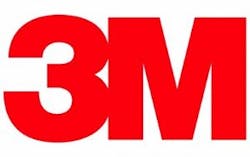Leveraging advances in automation and predictive analytics is essential to stay competitive in today’s economy. The rise of automation began many years ago, and the adoption of robotic manufacturing systems and standardized processes to get consistent output has continued to increase over the past 50 years.
Recent trends stemming from Covid-19 and labor shortages have only served to accelerate the adoption of these technologies. Now Industry 4.0 is taking the next step by incorporating connectivity, data and analytics to predict outcomes that can inform decisions and make real process improvements. By understanding and enriching core data, it’s possible to understand what’s driving undesirable events, such as equipment breakdowns or poor product and process performance, predict when they will happen, and take steps to mitigate them before they occur. Capturing data and turning it into actionable insights will soon become standard across the industry: companies that build strong capabilities in these areas will be well-positioned to grow with their customers, while those that don’t will find themselves left behind.
From guesswork to data-driven predictions
If you can’t predict when a production machine will break down, there are two things you can do: shut down for regularly scheduled maintenance whether the machine needs it or not, or make repairs after the machine breaks down and production is halted. Both amount to educated guesswork and are expensive and inefficient in their own ways. Similarly, optimizing a process for consistency and product quality can achieve savings by reducing rework and/or the number of scrapped pieces. A good way to achieve these and other improved outcomes is by collecting critical datasets and using predictive modeling to analyze potential issues before they occur.
A key application of predictive analytics relates to maintenance and involves taking enormous amounts of basic data and using it to create models that can predict when breakdowns are likely to occur. Picture a production machine that regularly collects minute-by-minute data on manufacturing variables and performance: by analyzing those data points and how they change over time, engineers can build models that predict how close the machine is to breaking down. As more data is collected and the model continues to improve, engineers can avoid taking the machine out of production unnecessarily, yet still have confidence that the breakdown point can be predicted in time for the machine to be shut down in an orderly fashion, rather than breaking down unexpectedly and creating an emergency.
Predictive modeling can also be used to improve process consistency and product quality. As an example, if a part of the production process is affected by temperature and humidity, knowing the exact temperature and humidity when each item or batch was created allows construction of a model showing the product quality outcome as those variables change. The model can be used to show what the conditions were when good products were produced, and when the final products failed to meet quality standards. Depending on the exact process, it may be possible to adjust a different input to maintain the optimal balance of production speed and quality as the temperature and humidity change. The data might also provide backing to support the expense of controlling both heat and humidity at all times for the best overall results. Data can be captured from many different sources to drive these improved outcomes, which can in turn increase profitability and enable companies to improve sales growth.
Iterative modelling: the next step for Industry 4.0
It is important to keep in mind that the work does not stop here: Data must be captured and understood on an ongoing basis. As the model incorporates more data and is used to improve the process, actions taken based on the model fine-tune the inputs and continue to provide more refined data. Over time, each successive iteration of the model helps optimize the process and improve predictive certainty, providing greater confidence in the model and its recommendations.
As more producers recognize the benefits of predictive analytics, this method of improving production processes will no longer be cutting edge. In the fairly near future, we expect predictive analytics to become table stakes, or, in other words, a basic requirement needed to keep up with the competition. That’s why 3M has been accelerating our investments in this space. We believe that by providing data on how our tapes and adhesives respond under different circumstances, we can help our customers improve their digital modeling, production, and remain relevant in an increasingly competitive market. Through 3M data and domain expertise, we are also working with customers to help them use data correctly with aims to increase their bond confidence by detecting and predicting unwanted outcomes and optimizing their processes. As solutions continue to surface and advance, customers are becoming more empowered with data and knowledge all throughout their manufacturing processes. We expect to see high-performing companies accelerate their use of data to transform the ways in which they solve problems, and in turn, achieve their business objectives and improve their financial performance.
Data, modeling and predictive analytics help design and production engineers improve manufacturing processes and product quality as well as address maintenance challenges.


